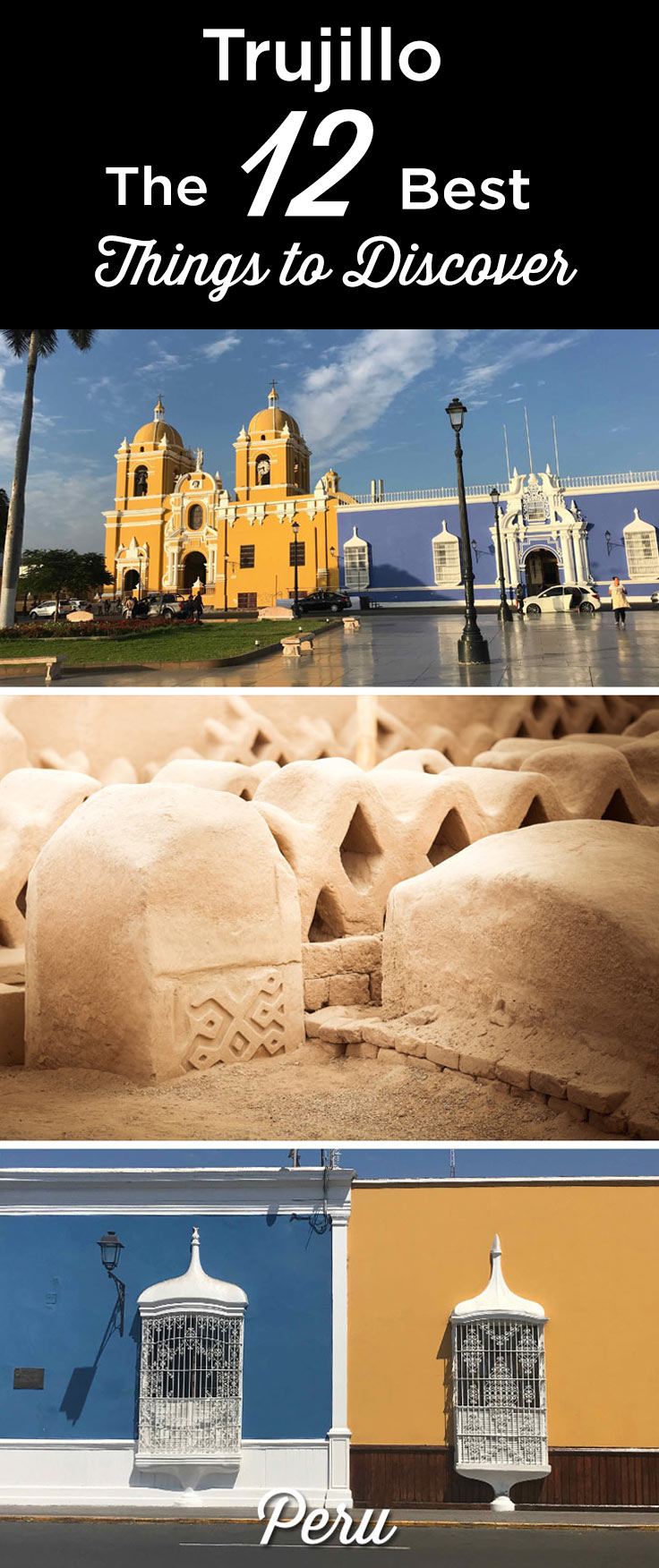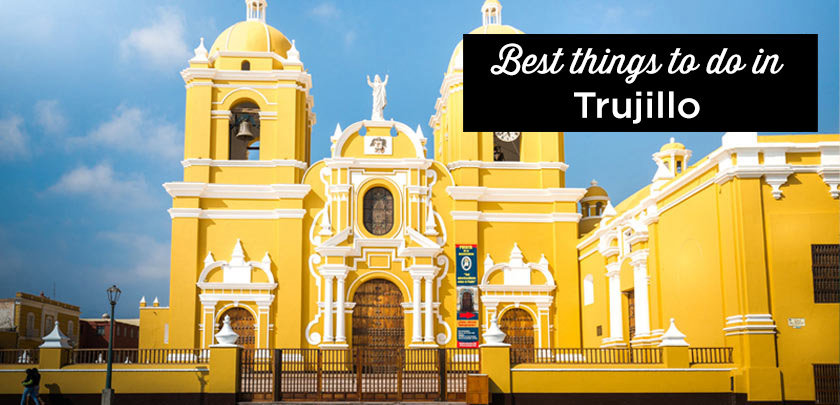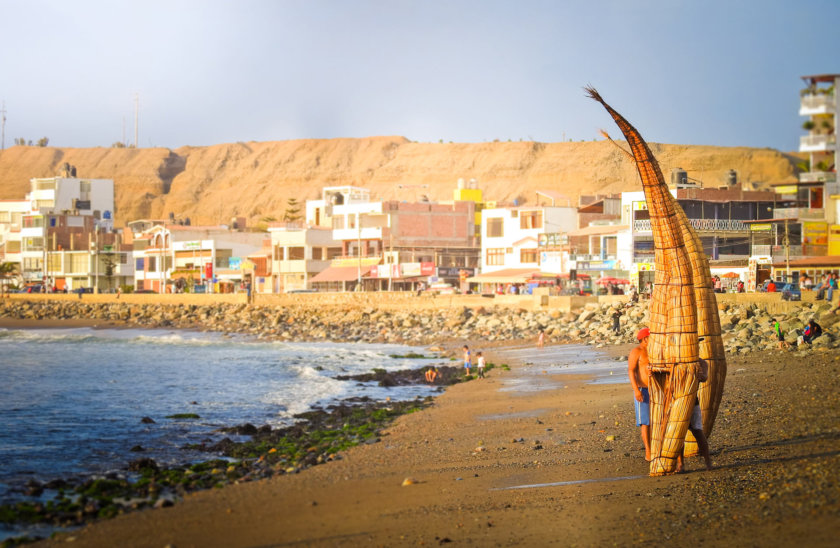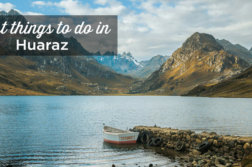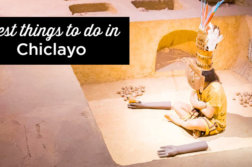Trujillo: All best places to visit + Where to stay
Trujillo, founded in 1534, was the first city in Peru to declare its independence from Spain.
Today, it stands out as a must-visit destination in northern Peru, appreciated especially by Peruvian travelers for its coastal charm, historical significance, and rich cultural scene.
Yet, Trujillo remains somewhat off the radar for many international visitors, as most tend to focus on southern Peru.
To help you plan your visit, I’ve put together this guide featuring the top things to do and see in Trujillo, along with the must-visit spots you shouldn’t miss.
You’ll also find my recommendations for the best places to stay in Trujillo and nearby Huanchaco—whether you’re traveling on a budget or looking for more comfort—as well as great dining options and practical travel tips to make the most of your experience.
So, what is there to discover in Trujillo? Let’s dive in!
Sommaire
Trujillo’s tourist attractions
1. The Main Square
As in most Latin American cities, the heart of Trujillo is located in the Plaza de Armas.
There are beautiful colonial buildings such as its cathedral that houses the Museum of Colonial Religious Art, the municipal palace of Trujillo, and the Liberty Monument that symbolizes the proclamation of Peru’s independence.
It is also the ideal place to enjoy a fruit juice and typical dishes after a day of sightseeing.
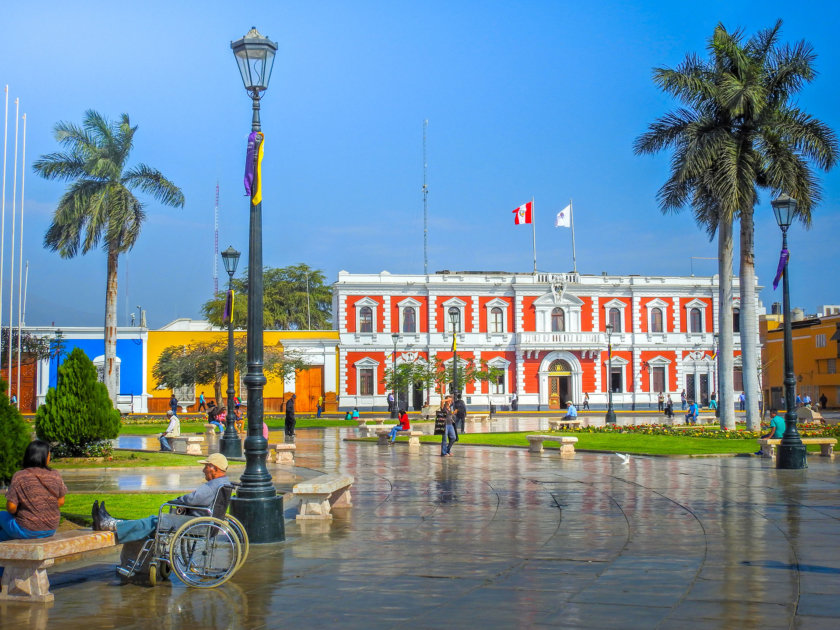
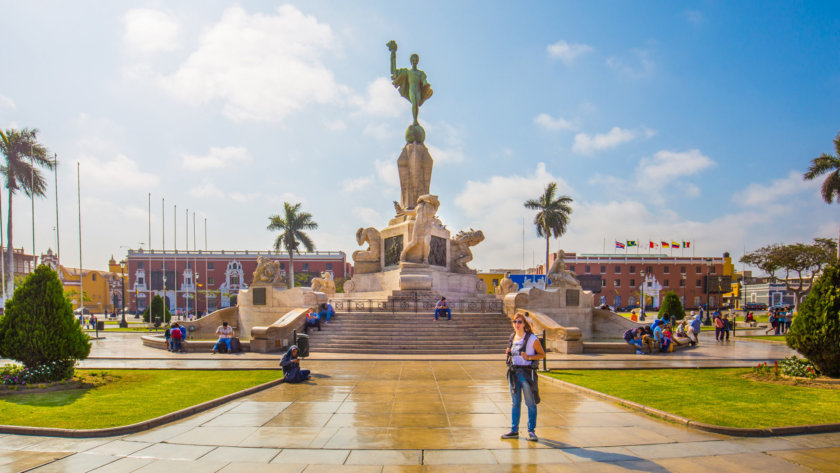
2. Urquiaga House
Casa Urquiaga, also known as Casa Calonge, is a neoclassical colonial house located in the historic center of Trujillo.
Today, this historic mansion houses the Central Reserve Bank of Peru and also functions as a museum, making it an essential cultural stop in the city.
Inside are distributed three courtyards with columns and several rooms that exhibit objects of great historical value, from pre-Inca art to pieces from the colonial and republican eras.
One of the most fascinating facts is that Simon Bolivar stayed here during his stay in Trujillo. Among the collection you can see the desk he used, as well as ceramics that he himself donated.
You will also find mahogany furniture, mirrors with gold leaf details and other pieces that show the elegance of the time.
The visit is ideal for hot days, as the interior is cool and offers a complete cultural experience. In addition, the museum offers guided tours to better understand the historical context of each room and the exhibits.
- Jr. Pizarro 446, Trujillo, free admission.
3. The Museum of Archaeology
The Museum of Archaeology, Anthropology and History of the National University of Trujillo shows the cultural development of the northern coast of Peru from 10,000 B.C. until the arrival of the conquistadors in 1532.
Located in the Casa Risco, a colonial mansion known for its courtyards decorated with murals, the museum houses more than 20,000 archeological pieces: ceramics, textiles, metal objects, stone and wood sculptures from cultures such as Moche, Chimu, Viru, Cupisnique and Vicus.
With ten exhibition halls (six permanent and four temporary), it offers a fascinating look at the pre-Hispanic history of northern Peru.
- Jr. Junín 682, Trujillo, Mon-Sat 9-17h, entrance 5 soles, children 1 sol
4. Ganoza Chopitea House
The Casa Ganoza Chopitea, also known as “La Casa de los Leones” for the two lion heads that decorate its façade, is considered by many as the most representative colonial house in Trujillo.
Built in the XVII century and declared Monumental Patrimony of the Nation, it stands out for its baroque facade and rococo pediment, decorated with vivid colors, mannerist murals, empire type windows and a neo-baroque balcony.
Its interior, with high wooden ceilings, houses three patios, ten halls and emblematic spaces such as the Men’s Hall and the Ladies’ Hall.
The mansion has had several owners over time and has served multiple functions: headquarters of the Industrial Bank of Peru, the Regional Government, the Tourist Police and even the scene of the First Biennial of Contemporary Art in the country.
- Jiron Indepencia, 630, Trujillo, free admission.
5. Plazuela El Recreo
The Plazuela El Recreo is one of the most emblematic spaces in the Historic Center of Trujillo, ideal for a quiet break under the shade of its ancient ficus trees.
During the viceroyalty, its façade marked the beginning of the road to the highlands, and today it preserves historical elements such as the old Caja de Agua (water tank) and a marble basin of Italian Baroque style that was originally in the Plaza Mayor.
Declared Monumental Heritage of the Nation, this small square is also the scene of cultural events such as concerts, exhibitions and festivals, which makes it a meeting point full of history and local life.
6. Attending cultural events
Trujillo is considered the cultural capital of Peru because, besides having been the territory of the pre-Columbian Moche and Chimu civilizations, it has seen the growth of many Peruvian intellectuals (writers, artists, philosophers, politicians, etc.)
Today it is an important place of cultural diffusion in Peru, which receives many interesting events.
- The Marinera Festival (January): is the most important, with queens, floats and dancers. As part of the festival, the National Marinera Contest, a beautiful coastal dance, and the Peruvian Paso Horse Contest are held.
- International Spring Festival (Sep-Oct): is one of the biggest festivals in the country. You can see the Corso primaveral, a big parade with beautiful floats, dancers and beauty queens from all over Peru and even from abroad.

7. Chan Chan
Chan Chan, the largest adobe city in the world and the largest pre-Columbian city in America, classified as a World Heritage Site by UNESCO.
Located between Huanchaco and Trujillo, this archaeological zone of 4,940 acres was the capital of the Chimu culture until its conquest by the Incas.
The main feature of the city are its adobe walls with magnificent reliefs of geometric shapes or animals (fish, birds). Originally they could reach more than 40 feet high.
Calculate 1h30 for the visit because the city of Chan Chan is very extensive.
How to visit Chan Chan:
- From Trujillo: 20 min by cab (15 soles) or by taking a combi to Huanchaco (you have to tell the driver that you are going down to Chan Chan).
- From Huanchaco: 20 minutes by bus (1,25 soles per person). The bus leaves you at the entrance of the site and you have to walk about half mile to get to the ticket office.
- You can hire a guide at Chan Chan but it is not mandatory. Cost 60 soles.
- Open from 9am to 4.30pm. The museum is closed on Mondays.
- 10 soles entrance fee includes Huaca del Sol y la Luna.
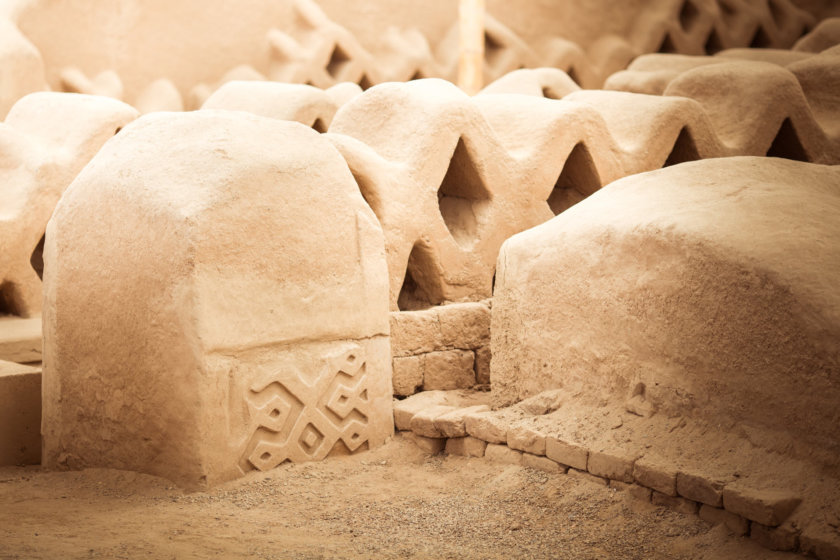
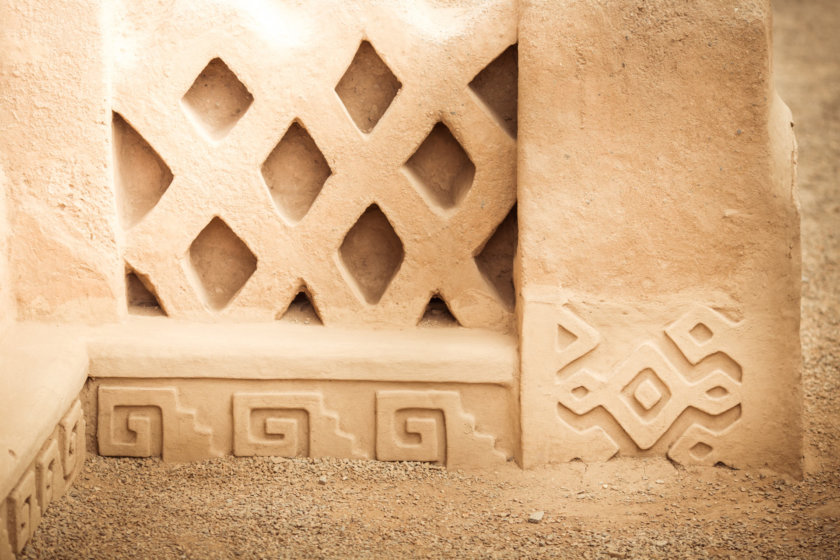
8. Huaca Arco Iris or Huaca del Dragon (Rainbow Huaca)
Temporarily Closed.
The Huaca Arco Iris is located within the city of Trujillo, about 20 min drive from Chan Chan.
This temple is another vestige of the Chimú civilization and owes its name to the impressive fresco depicting a dragon crowned by a rainbow.
I spent only 10 minutes in the huaca because, honestly, apart from the fresco, there is not much to see.
How to visit the Huaca Arco Iris:
- To arrive from Trujillo: by cab (3 soles) or by combi to La Esperanza, in front of the Cassinelli Museum and get off at the 5th stop.
- Tickets Chan Chan + Huaca Esmeralda + Huaca Arco Iris: 11 soles adult, student 5 soles. Ticket valid for 2 days
- Open from 9 am to 4:30 pm.
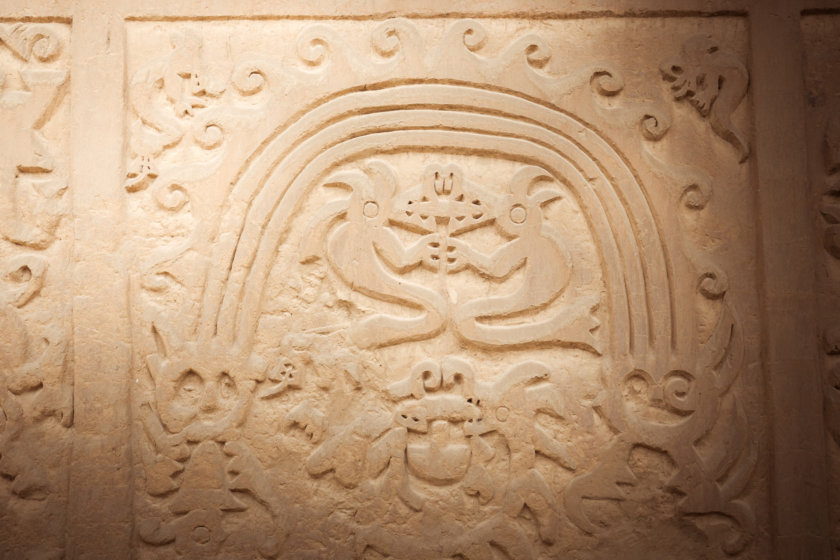
9. Huaca Esmeralda
Temporarily Closed
The third and last site included in the ticket is the Huaca Esmeralda.
It is a temple with two platforms, and decorated with bas-reliefs, which is not as impressive as the magnificent city of Chan Chan, something to consider if you have little time.
The option of hiring a driver to take us to the 3 sites turned out to be very practical since once the visits were finished, he left us in the center of Trujillo.
How to visit the Huaca Esmeralda:
- Tickets Chan Chan + Huaca Esmeralda + Huaca Arco Iris: 11 soles adult, student 5 soles. Valid for 2 days. On sale only at Chan Chan and Huaca Arco Iris
- Open from 9 am to 4:30 pm
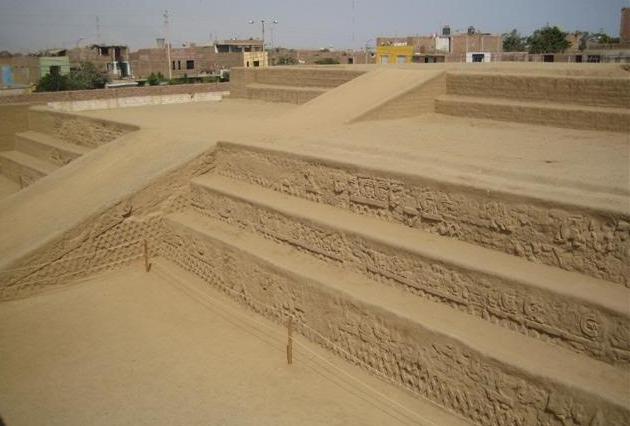
10. Huacas of the Sun and the Moon
The Temples of the Sun and the Moon form an important archaeological complex of the Mochica culture.
The Temple of the Sun is the larger of the two, but it is not yet accessible because archaeologists are conducting excavations.
The Temple of the Moon will be enough to satisfy your curiosity!
Inside you can see some friezes representing the god Ai-Apaec who also bore the endearing nickname of “beheader god”.
It is not surprising since this culture practiced human sacrifices.
The visit to the Huaca de la Luna begins with a stop at the sacrificial pit where many human skeletal remains were found.
But the most impressive thing about the huaca is the good state of conservation of the paintings thanks to the method of construction of the temples: each leader built a floor corresponding to his reign; at his death, his successor filled it with adobe bricks and built a new floor on top of it.
Then, the archaeologists only had to clean the 5 floors, one by one, to discover the frescoes with all the original colors!
How to visit the pyramids of the Sun and the Moon:
- How to get there from Trujillo: 30 min (2 soles) by colectivo from Ovalo Grau (colectivos leave from the gas station located next to the plaza, you have to ask for the one that goes to the Huaca del sol). Or 15 minutes by cab (10 soles).
- Entrance fee 10 soles (student 5 soles, child 1 soles) + 5 soles for the Huacas Moche museum.
- The cost of the visit includes the guide (obligatory) and lasts 1 hour
- Open from 9h to 16h
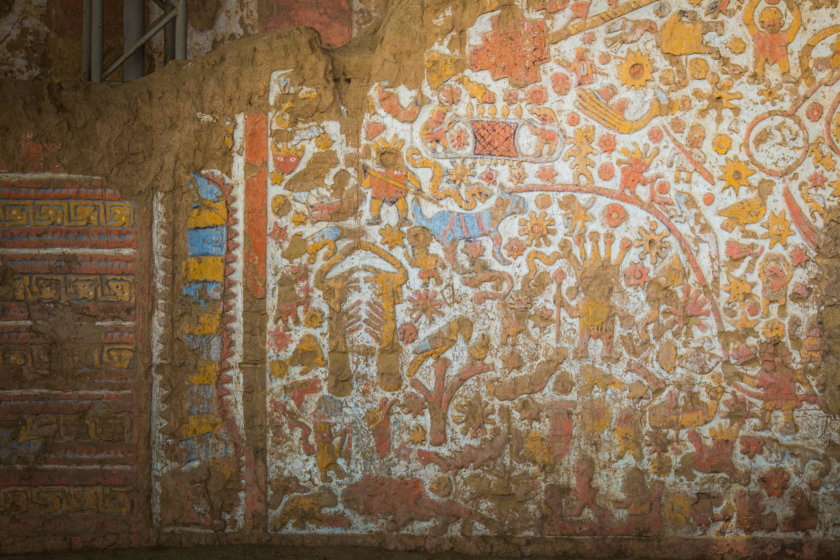
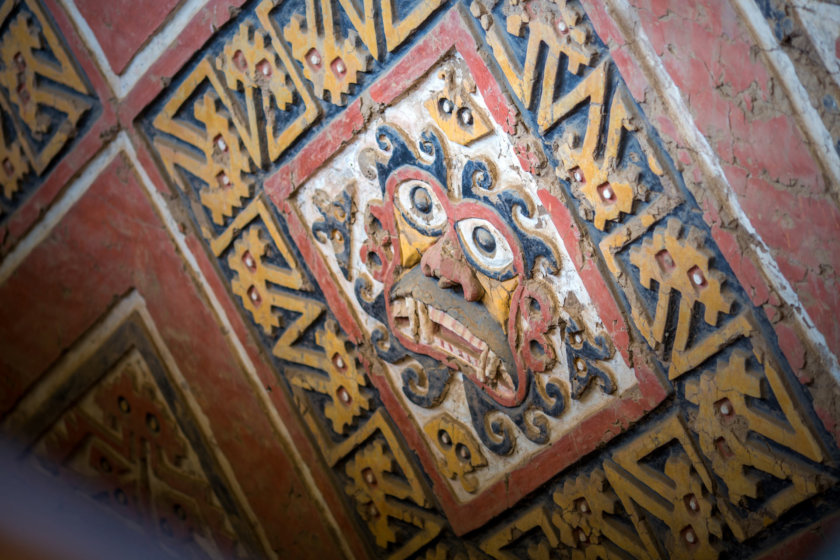
11. El Brujo
El Brujo archaeological complex is located 37 miles from Trujillo, on a 55 feet high terrace facing the sea.
El Brujo, together with the Huacas of the Sun and the Moon, was the religious, political and economic center of the Mochicas. But in reality, its history extends over 5000 years and several cultures occupied the site until colonial times.
There are three main buildings: Huaca Cao, Huaca Prieta and Huaca el Brujo.
The most important and best preserved huaca is the Huaca Cao, which contained the tomb of the Lady of Cao: the first known high-powered woman of Peru!
The temple impresses with its large frescoes and relief paintings depicting warriors, prisoners and priests, among others.
Don’t miss the site museum featuring ceramics, the colonial period, divinities, human sacrifices and, of course, the famous mummy of the Lady of Cao with her magnificent gold jewelry.
How to visit El Brujo:
- How to get there from Trujillo: 1 hour and a half by bus in the direction of Chocope (2 soles) from the Interurban Terminal. Then ask for the bus to El Brujo (2 soles).
- Entrance fee 10 soles (includes entrance to the Complex, the Huaca Cao Viejo and the Cao Museum). Website
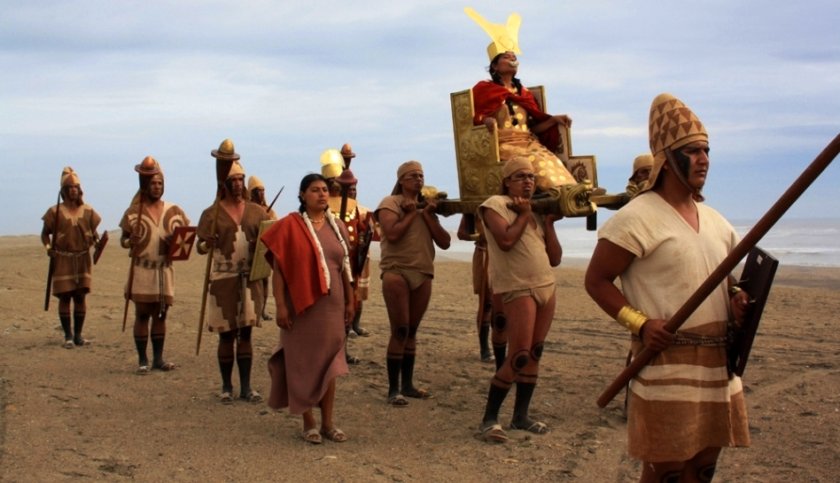
12. Enjoying Huanchaco beach
Huanchaco is a fishing village where they still use the typical boats of the region: the “caballitos de totora“.
These rafts are made of totora reeds (like the Uros islands of Lake Titicaca) and have been used for about 2,000 years by local fishermen.
I still wonder how they can kneel without falling into the water, because they are very narrow and look very small in front of the ocean waves.
If you like fishing, you can buy a line and bait for only 5 soles, and set up on the pier overlooking the ocean. You will have a great time!
Huanchaco is also one of the best surfing spots in Peru. With a little luck, you’ll be able to admire some surfers practicing their art.
If you want to take to the water, there are several surf schools that rent boards and offer courses for all levels.
- Where to eat in Huanchaco: Umi sushi House & Bar for very good makis (18 soles for 12 pieces) or Pisagua, a small unpretentious restaurant, not very touristy but they prepare one of the best ceviches in Huanchaco.
- How to get to Huanchaco: a cab from Trujillo costs 15 soles (20 min).
- Read also: My Complete Article about Huanchaco
Staying in Trujillo or in Huanchaco
It is possible to sleep in Trujillo or sleep in Huanchaco when visiting the region.
Both are different and have their advantages.
The advantage of Trujillo is that it is a city, so there is more to see when walking around (architecture, museums, restaurants, etc.) and it is a central starting point for excursions in the surrounding area (which are the real attractions of the region). Trujillo is certainly quite hectic.
In a completely different style, Huanchaco is a coastal resort town, perfect for relaxing, enjoying the sea, maybe try surfing! Huanchaco is also closer to the airport.
Finally, both are only 20 minutes by cab from each other, so it’s more a matter of personal taste than strategic choice.
Here are my top recommendations for lodging in Trujillo and Huanchaco:
Where to Stay in Trujillo
- Hostal Don Alberto: The best option if you’re looking for a budget-friendly hotel in Trujillo. Family-run, well located in the city center, with comfortable beds and free parking. From just $20 per night for a private room.
- Costa del Sol Trujillo Centro: With a prime location right next to the Plaza de Armas, this hotel offers comfort and privacy in a charming historic building. Enjoy the outdoor pool, fitness center, and on-site restaurant. Just 10 minutes from pre-Inca ruins. A great value for money. Rooms from $71.
- DoubleTree by Hilton: This is the best hotel in Trujillo, with comfortable rooms, outdoor pool, quality restaurant, bar, and sauna. Breakfast included from $109 per night.
Best hotels in Huanchaco
- Totora Surf School: This surf school and hostel, located in front of the sea, is the best option for cheap accommodation in Huanchaco. Great rooftop terrace, very relaxed atmosphere and good wifi – from only 16$ USD per night!
- Hotel Montemar: Comfortable Pet-Friendly rooms on the beachfront. It has a swimming pool and views of the city. From 30$ USD.
- Hotel Bracamonte: Is a house with pool and garden, bright rooms with balcony, less than 5 min walk from the beach. Breakfast included, from 80$ USD per night.
How to get to Trujillo
Here are the different options to get to Trujillo from Lima:
Going to Trujillo by plane
Carlos Martinez de Pinillo airport is 20 minutes from Trujillo (20 soles by cab) and 10 minutes from Huanchaco.
From Lima, the flight takes about 1 hour and there are several departures a day.
To find a cheap flight ticket to Trujillo or your international flight to Peru, I recommend you to use our flight comparator, in partnership with Skyscanner: it is the guarantee to get the best price!
Going to Trujillo by bus
The trip from Lima takes 8h-9h, with many daily departures, especially at night.
Several companies make the trip (Ormeño, Cruz del Sur, Oltursa) and the price varies considerably depending on the seat chosen.
Going to Trujillo by car
Driving from Lima to Trujillo takes around 8 hours and 20 minutes (345 miles) along the Panamericana Norte highway. It’s a long journey, but the road is straightforward and mostly in good condition.
Traveling to Trujillo by car is a great option if you want total freedom to explore at your own pace, make stops along the way, or plan detours to lesser-known places. But just like any other travel expense, it’s important to compare offers to find the best car rental at the best price.
Personally, I always use Booking.com Cars to rent a car, and here’s why I recommend it:
- Compare prices easily from all major agencies in one place—it’s fast and super convenient.
- Free cancellation on most rentals, so you can change plans without stress.
- Better insurance deals than what rental companies offer—more coverage, less money.
Click the button below to find the best car rental deals in Peru:
Where to eat in Trujillo?
- Eat a ceviche: the city of Trujillo is famous for the quality of its seafood and fish, so good options are not lacking, but I recommend Pisagua or Cevichería el Paisa.
- The Café Bar Museo is an ideal place to have a coffee or a drink, with live music on weekends. It also houses the Toy Museum and its collection of toys from the 50’s. Jr. Independencia, 701, Trujillo.
- El Patio Rojo is a nice café with a healthy proposal: fresh ingredients, fruit juices, salads, granola, vegetarian options, good desserts, and Peruvian craft beers. Jirón San Martín 883, Trujillo Facebook Page
- Cafeteria Asturias is a small, unpretentious restaurant with breakfast and an excellent turkey sandwich. Across the street is the Castañeda pastry shop that sells very good alfajores. Jiron Francisco Pizarro, 739, near Place d’Armes, Trujillo
- El Boticario Bar is a bar that offers a true mixology experience for cocktail lovers. It is renowned for the technique of its cocktails, the quality of the ingredients and the attention to detail. Avenida Larco Herrera, 992, Trujillo.
When to go to Trujillo?
Trujillo is known as the “city of eternal spring” for its mild climate all year round.
But the best time to visit Trujillo is between October and January, to avoid the rainy season.
Rent a car
Book entrance tickets and guided visits
Take a travel insurance
Book a tour
✈️ Book your flight
Traveling to Peru? These articles will help you!
Discover all my articles about Peru: All my tips and itineraries to plan your trip in one place!
40 EPIC Things to Do in Peru (+ My Best Tips)
- Chachapoyas: The 12 Attractions You Shouldn’t Miss
- Chiclayo: All best places to visit + Where to stay
- Itinerary: 5-6 days in Peru – Lima, Arequipa, Colca Canyon, Cusco, Sacred Valley and Machu Picchu
- Itinerary: 7-8 days in Peru – See the maximum in one week
- Itinerary: 10 days in Peru – The ideal itinerary for a short stay in Peru
- Itinerary: 2 weeks in Peru – The classic route
- Itinerary: 15 days in Peru – An itinerary that includes northern Peru
- Itinerary: 3 weeks in Peru
- Itinerary: 3 weeks in Peru + Bolivia – The best itinerary for visiting both countries
- Itinerary: 1 month in Peru – What to see and do in 30-31 days
You’re using Pinterest? Here is the picture to pin!
